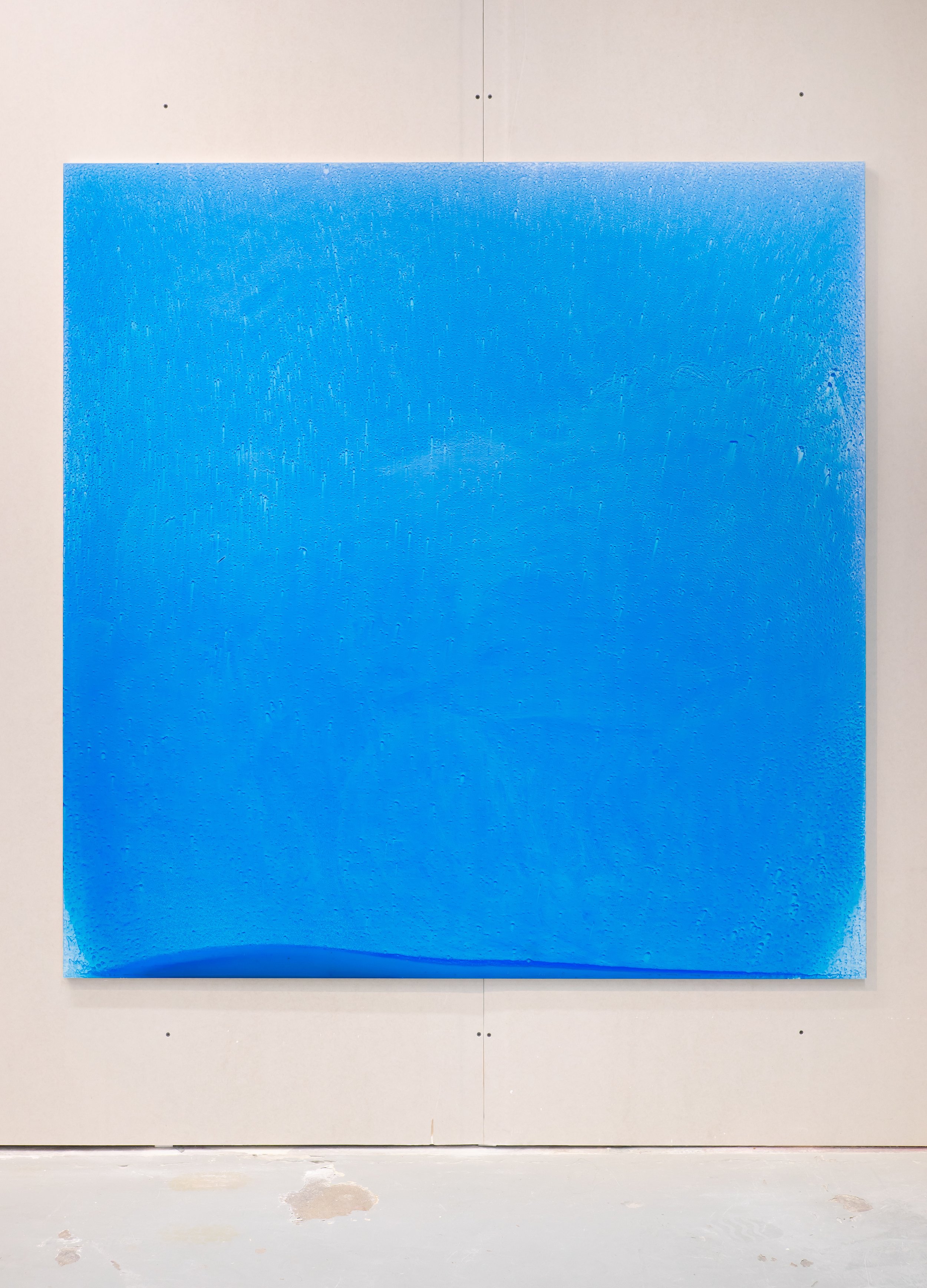In Broad Daylight
In Broad Daylight
In Broad Daylight
2018
ISSUES, Stockholm
Acrylic on Dibond, each work 154 x 150 cm
Röhss’ curiosity with interpretations of time manifested in human culture in relation to how perpetual signs of time manifest in nature, has recently prompted the artist to explore the dialectic of time throughout several projects realized in different mediums.
***
The enquiry stirred up Röhss’ past experiences of summer solstices as he remembers them in Sweden. During the undiscriminating light intensity of the Scandinavian solar pinnacle, the difference in brightness between the hours of the day varies less than ever. It provides a subtle indication of time, as if the day has slowed down and is distributed through a more homogenous frequency than usual.
The sun is the celestial phenomena that has been utilized most frequently in our attempts to observe the passing of time. Historians and mathematicians alike much prefer sundials to mechanic or electronic clocks, as they are our most unambiguous devices for defining time through the suns’ movement in a specific geographical location. Mid-April to mid-June, the sun appears “fast”, i.e. it will reach solar noon several minutes earlier than your watch will indicate 12:00:00.
With this new series Röhss re-engages in a material enquiry he embarked on in 2012: an examination of how paint behaves on a metal surfaces when diluted to the point off disintegration. Thin layers of Cerulean Blue Chromium is sprayed onto DILITE® panels to dry flat. By working the medium in this fashion the artist explores how a suggestion of a space opens up on the effectively smooth planes.
The painting method employed in the works on display was utilized as a means of observing the fluctuations in light in the local sub strato-sphere during summer solstice as Röhss recalls it. The artist considered the hours of June 21 2018, each suggesting a specific tonality which formed the parameter for the eight works.
The Haystacks was Monet’s first rigorous project to explore how the facet of one single subject differs according to fluctuations in light and atmosphere at different times of day. Every morning before the crack of dawn the painter brought some thirty-odd ongoing paintings to the same field in Giverny, and worked on whichever of them most resembled the light conditions of the given moment.
“For me a landscape hardly exists at all as a landscape, because its appearance is constantly changing; but it lives by virtue of its surroundings, the air and the light which vary continually.”
— Claude Monet
It is more meaningful to consider the panels featured in this exhibition as approximations, or impressions, of light phenomena registered within Röhss’ sensory-system, than as an index of instrumental readings. Despite the artists’ engagement in a stern rationale for making of the work, this exorcise in painting become less of an objective undertaking and more a tool for a sensual navigation within a field of interest.











